Intel NUC5i5RYK Review: A Broadwell-U UCFF PC for Enthusiasts
by Ganesh T S on February 20, 2015 8:00 AM ESTGaming Benchmarks
Intel's integrated GPUs don't have a big name in the gaming community. Once in a while, Intel throws in a surprise. In the Haswell family, CPUs with Iris Pro graphics gave a pleasant surprise to casual gamers. In this section, we will identify whether the Intel HD Graphics 6000 in the Core i5-5250U can provide an acceptable gaming experience. It will also be interesting to determine whether HD 6000 can provide better numbers compared to the HD 5500 in the Core i7-5500U (BRIX s).
For the purpose of benchmarking, we chose four different games (Sleeping Dogs, Tomb Raider, Bioshock Infinite and DiRT Showdown) at three different quality levels. As someone focusing on HTPCs and multimedia aspects, I rarely get to process gaming benchmarks, even while evaluating GPUs. One of the aspects that I feared was spending lot of time in installing the same games again and again on different PCs under the review scanner. The solution was to go the Steam route. Unfortunately, Steam also likes to keep the game files updated. A quick online search revealed that Steam could make use of an external drive for storing the game executables and downloadable content. With the Steam drive on-the-go use-case being read-heavy, the Corsair Flash Voyager GS USB 3.0 128GB Flash Drive (with read speeds of up to 275 MBps) was ideal for use as a portable Steam drive.
Sleeping Dogs
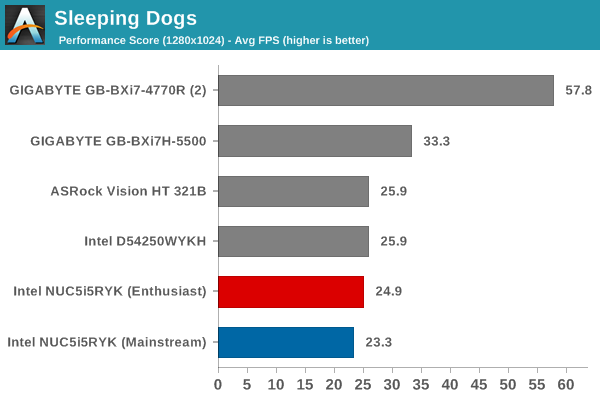
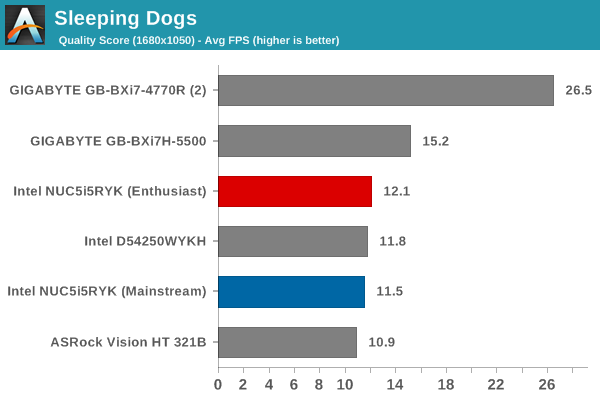
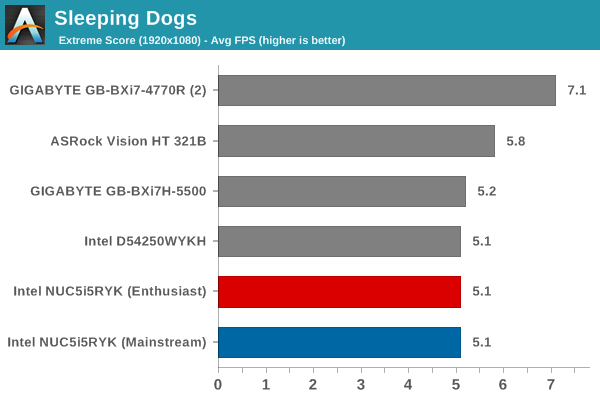
Tomb Raider
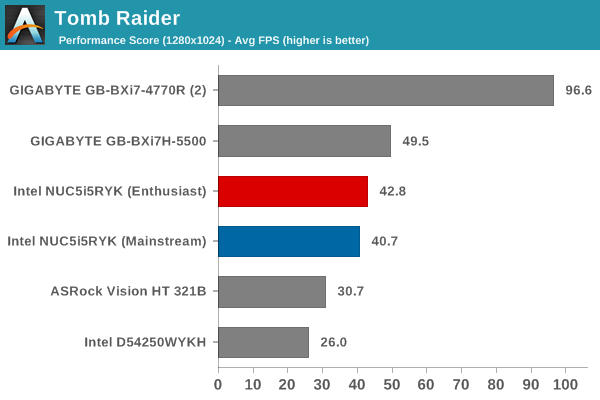
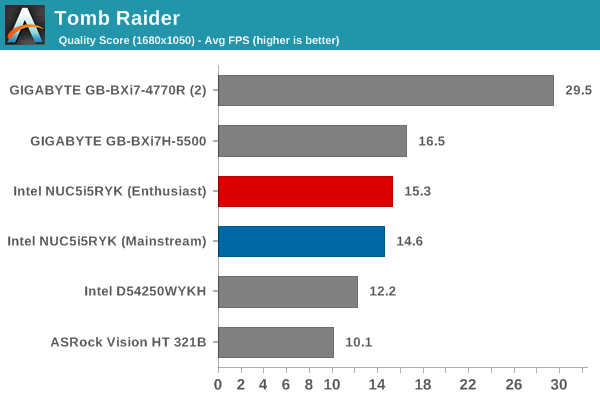
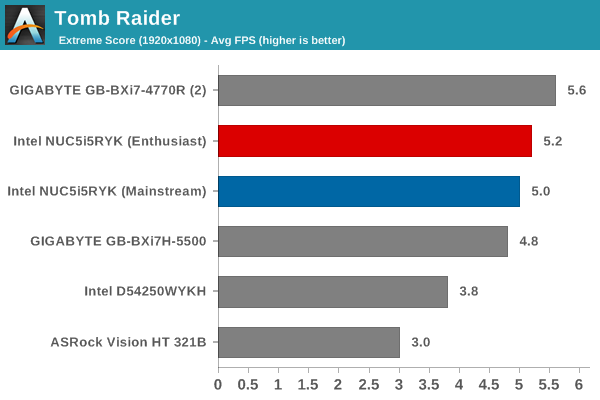
Bioshock Infinite
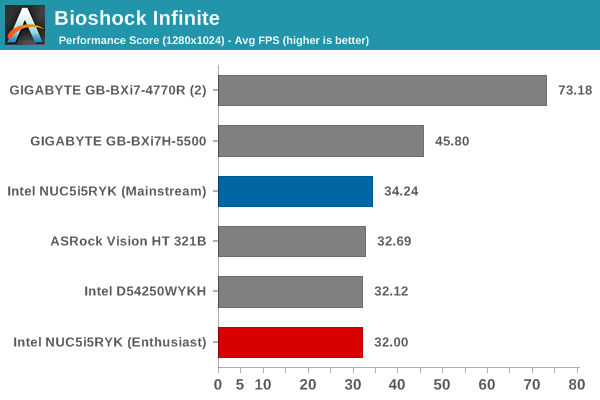
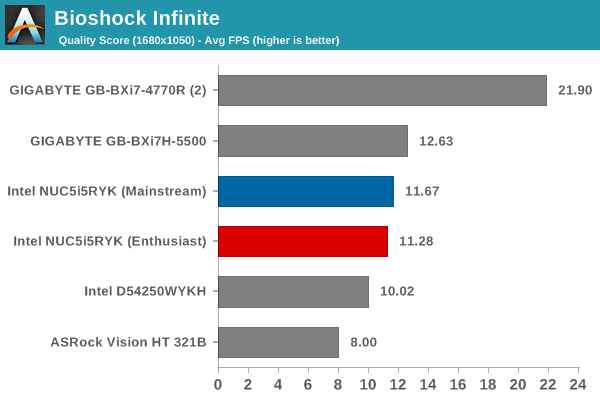
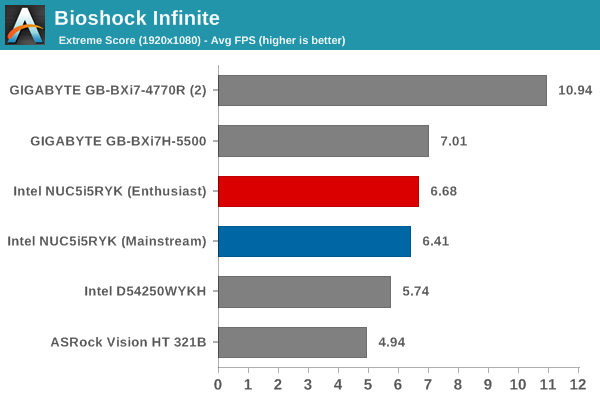
DiRT Showdown
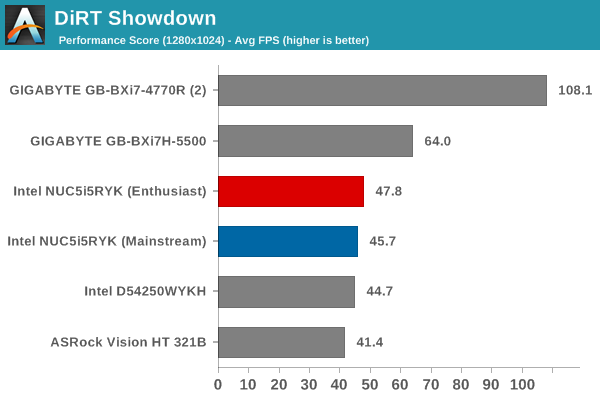
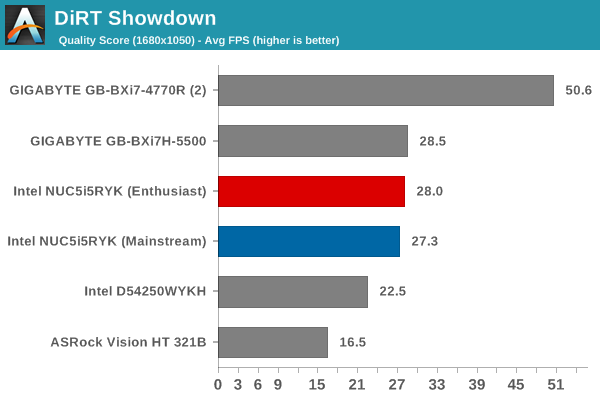
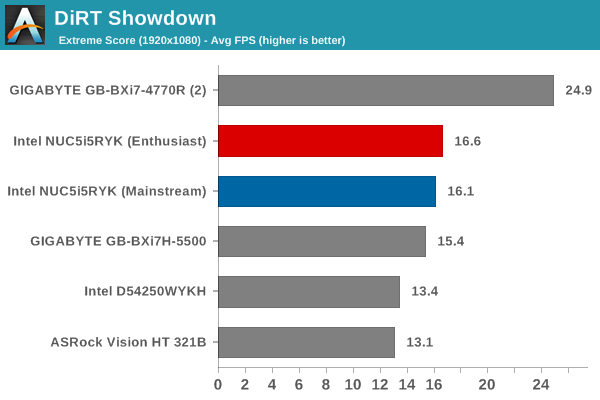
The gaming benchmarks, when considered as a showdown between the HD Graphics 5500 and HD Graphics 6000, is is a complete walkover for the former in the Core i7-5500U. Faster memory helps in salvaging a few FPS here and there, but the games are not fluid even with all settings dialed down. One aspect to be kept in mind while considering the above results is that the HD 5500 in the Core i7-5500U had accesses to DRAM running at 2133 MHz, while the HD 6000 in the NUC5i5RYK was limited to 1866 MHz.










83 Comments
View All Comments
extide - Monday, February 23, 2015 - link
No, the article is correct. 1st gen NUC was DCCP847DYE -- which was Celeron 847 -- Sandy Bridge based Celeron.Paapaa125 - Friday, February 20, 2015 - link
Gallery images have very bad underexposure problems. Please pay attention next time: you have to compensate exposure if you have too white background....piasabird - Friday, February 20, 2015 - link
It looks like all Intel did is take an i5 and underclock it down to about half the normal speed. I have an i3 4330 and it runs at 3.5 ghz and has the 4600 graphics and 4 megs of Cache. It runs great. I did turn the power supply that sits above the CPU so it pulls hot air out of the case. I run everything at stock speed with the CPU cooler Intel sold with the retail CPU package. No reason to purchase anything new.piasabird - Friday, February 20, 2015 - link
I liked the way you can select several similar comparisons to compare the review item to. However, I would compare it to a couple i3 processors that might typically be sold for Mini-ITX systems.Aikouka - Friday, February 20, 2015 - link
Does the Broadwell NUC still have the same issue with dropping bitstreaming when turning home theater devices (e.g. TV, AVR, etc.) off and then back on? I ended up getting rid of my Haswell NUC, because I needed something that was more reliable. Amusingly enough, my passively-cooled i3-3225 HTPC works great. It also lacks the weird issue where putting PLEX in the start-up folder on the NUC causes PLEX to improperly connect to the server -- you'd end up seeing the different libraries, but you could never browse them.CSMR - Friday, February 20, 2015 - link
Why isn't the HD6000 graphics with 48EUs dominating the HD5500 graphics with only 24EUs?TheinsanegamerN - Saturday, February 21, 2015 - link
My guess is a combination of lack of memory bandwidth and power restrictions. HD 4600 just barely maxes out 1600MHz memory, and 1866 is barely enough for HD 5500. HD 5200, the previous iris pro, had 72 GB/s of bandwidth, and still had bandwidth issues. 1866 ddr3 is nowhere near fast enough.The second thing is power consumption. HD 4600 in the i5 4300m pulls about 19 watts of power. now, hd 6000 has far more cores, 48 vs 20, which is still too much for 14nm to run on that little power. since the entire TDP is only 15 watt for that cpu, the GPU is both bandwidth restricted and power restricted.
vcorem - Friday, February 20, 2015 - link
The first NUC was IvyBridge, not SandyBridge.It was released in 2012
romrunning - Friday, February 20, 2015 - link
How did the Mainstream setup beat the Enthusiast configuration in the 7-Zip benchmark?!Is that a mistake? Should the labels be switched?
Teknobug - Friday, February 20, 2015 - link
I love my NUC, barely 6W idling and 18W under load, surfs the net great, plays Netflix and YT videos great, plays my Steam games via in-home streaming perfectly.